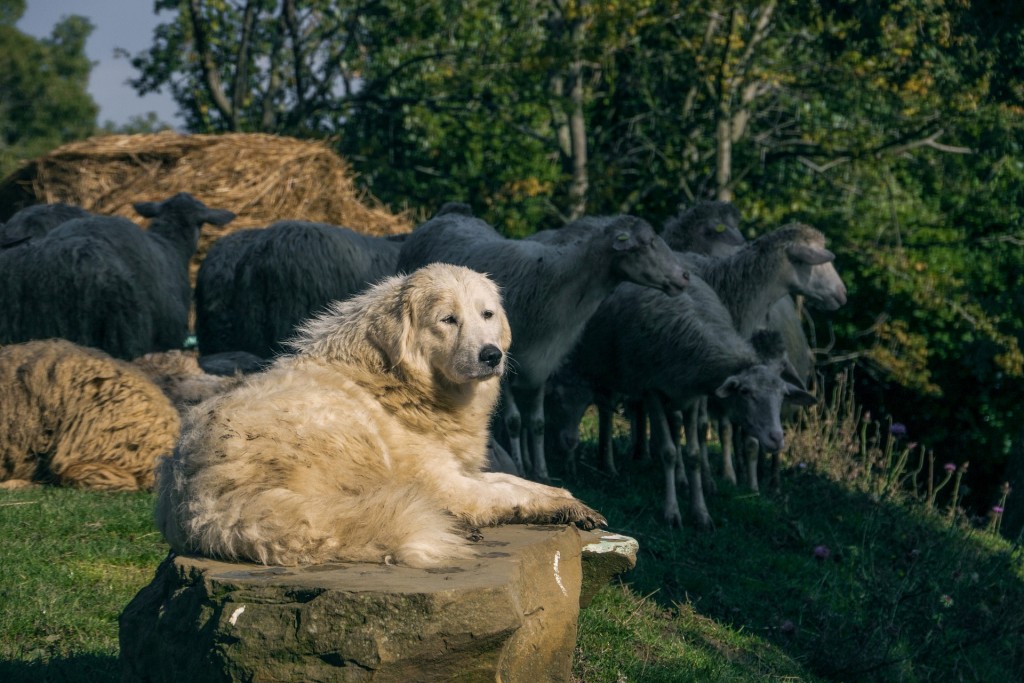Other names: Cane da Pastore Maremmano-Abruzzese, Maremmano, Pastore Abruzzese, Pastore Maremmano, Abruzzese Mastiff, Mastino Abruzzese, Abruzzo Sheepdog or Abruzzese Sheepdog.
The Maremmano-Abruzzese Sheepdog or Maremma Sheepdog, usually referred to simply as the Maremmano or Abruzzese Sheepdog, is a breed of livestock guardian dog indigenous to central Italy, particularly to Abruzzo and the Maremma region of Tuscany and Lazio. It has been used for centuries by Italian shepherds to guard sheep from wolves. The literal English translation of the name is “The dog of the shepherds of the Maremma and Abruzzese region”. The English name of the breed derives from that of the Maremma marshlands, where, until recently, shepherds, dogs and hundreds of thousands of sheep over-wintered, and where the breed is today abundant although sheep-farming has decreased substantially. The breed is widely employed in Abruzzo, where sheep herding remains vital to the rural economy and the wolf remains an active and protected predator. Similar breeds include the Pyrenean Mountain Dog, the Kuvasz of Hungary, the Tatra of Poland, the Cuvac of Slovakia and the Šarplaninac (although not white), with all of which it may share a common ancestor and the Akbash Dog of Turkey.
History
Descriptions of white sheep defense dogs are found in ancient Roman literature, in works such as those of Columella, Varro and Palladius. Similar dogs are depicted in numerous sculptures and paintings from Roman times to the present. Among the earliest is the series of large statues (two in Rome, one in Florence, one – the Duncombe Dog – in England) copied from a Hellenistic bronze from Pergamon. Iconographic sources that have been identified as relevant to the history of the Maremmano include.
Use
The traditional use of the Maremma sheepdog is as a guardian for the protection of sheep flocks against wolves. Columella, writing in the first century AD, recommends white dogs for this purpose, as the shepherd can easily distinguish them from the wolf, while Varro suggests that white dogs have a “lion-like aspect” in the dark. The dogs work in groups; three or four dogs are an adequate defense against wolves and stray dogs. Their function is mostly one of dissuasion, actual physical combat with the predator being relatively rare. Nevertheless, working dogs may be fitted with a roccale (or vreccale), a spiked iron collar which protects the neck in combat. The ears of working dogs are normally cropped.
Dogs used for flock protection are placed among the sheep as young puppies – no more than 40 days old – so that they bond with them; human contact is kept to the indispensable minimum. If there are already guardian dogs in the flock, the puppy imitates and learns from their behaviour. The traditional use of the Maremmano is with sheep, but the dogs can form a similar bond with cows and have been used to protect range cattle. A small number have been used since 2006 on Middle Island, off Warrnambool, in Victoria, Australia, to protect a small population of the Little Penguin (Eudyptula minor) against foxes.
